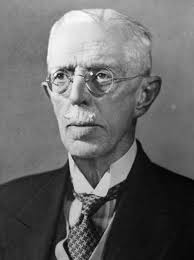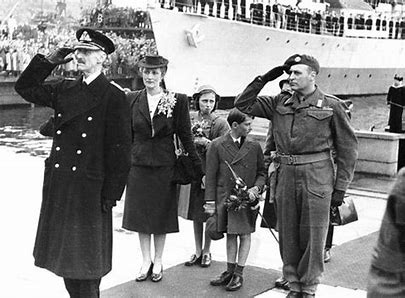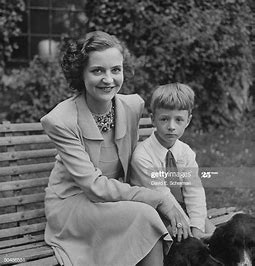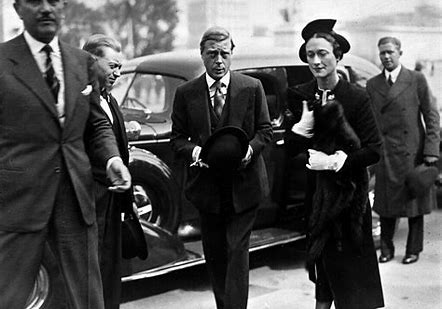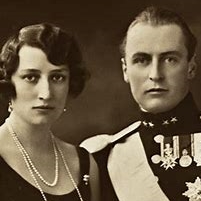Although the German invasion of Norway had led to the flight of Norway’s Crown Princess Märtha and her three children (Ragnhild, Astrid and Harald) across the border into ‘neutral’ Sweden, to avoid capture, in the early hours of 10 April 1940, it was not a situation with which Crown Prince Olav was happy. From his current refuge at Trangen, Langvatnet, Olav wrote to his friend, President Franklin D. Roosevelt, on 10 May, recalling a conversation between the two at Roosevelt’s Hyde Park country estate, in April 1939, during which the President offered sanctuary to Olav and Märtha’s children in the event of war reaching Norway. In his letter, the Crown Prince also questioned how safe his children actually were in Sweden. Certainly, even though the Crown Princess was Swedish, some in Sweden believed that her and her children’s presence compromised the country’s neutrality. Olav certainly had reason to be fearful for Märtha, who was now staying at Ulriksdal Palace in Stockholm, and was under constant political pressure from both the Administrative Council in Oslo and her Uncle, King Gustav V of Sweden, to embrace a ‘Norwegian Regency’ model whereby Harald would be proclaimed king, although his Swedish-born mother would act as regent until the Prince reached his majority. Those who held to this viewpoint, promoted it on the basis that it offered the only opportunity to save the Norwegian monarchy. The plotting had reached a crescendo following the departure of King Haakon and Crown Prince Olav from Norwegian soil on 7 June for exile in London and caused the Crown Princess to send a telegram to London warning her husband and father-in-law of the situation.
There was now the very real danger that Prince Harald might be kidnapped and taken to Oslo. This must have crossed the mind of Crown Prince Olav for, on 22 June, he wrote again to President Roosevelt, from Buckingham Palace, asking him to make good on his offer of sanctuary for his children, while also requesting that it be extended to include the Crown Princess. Roosevelt would be as good as his word and more, for on 13 August, the royal children and the Crown Princess left Ulriksdal and travelled northward through Finland to Petsamo (now Petsjenga, Russia) where, on 15 August, they embarked the USS American Legion which transported them and other refugees across the Atlantic Ocean to New York. The Crown Princess-who was given accommodation in the Captain’s cabin-appeared on the ship’s manifest as ‘Mrs Jones.’ Other members of the royal party included her Chief of Staff, Peder Anker Wedel Jarlsberg, Lady-in-Waiting, Mrs Ragni Østgaard and the children’s nurse, Signe Svendsen.
Märtha and the children arrived in New York on 28 August, after a stormy journey. From the quayside, the Crown Princess and her party went immediately to the Waldorf Astoria hotel where a room full of dolls and toys had been arranged to amuse the children. As the Crown Princess had not spoken to her husband in over four months, her first request was for an international call to be put through to Crown Prince Olav in London. Aside for the usual romantic endearments, Olav was able to give his wife some useful advice on ‘official lines to take’ with the US press.
The family’s suite at the Waldorf Astoria was luxurious and spacious and was being paid for by the Boomer family, who owned the hotel and had strong dynastic links with Norway. Märtha chose to give her press conference in the sitting room. She emphasised that her presence in America was temporary, stating that, ‘All we Norwegians look forward to the day when we shall return to a free and independent Norway.’ It was not an altogether pleasant experience and the Crown Princess would later confide to a friend that she ‘would rather submit to an operation’ than go through the ordeal again.
The Crown Princess’ next stop was to the private home of her host, President Roosevelt at Hyde Park. At the President’s informal retreat on his Springwood estate, Top Cottage, the children played happily in the swimming pool, while Märtha took the chance to have a long chat with the President about her situation. They also discussed where she might live. Within days, the Crown Princess was heading to the White House in Washington D.C., from where the President took her for a ride in his official car to view a large twenty-four roomed property, set in 105 acres, at Pook’s Hill, Maryland. This is subsequently leased by the Norwegian government-in-exile for the royal family’s use. While the house was being made ready, the Princess stayed at the White House in the Rose Guest Bedroom.
America was a whole new way of life, both for the children and their mother. Although Märtha was already proficient in English (albeit with a strong Scandinavian accent) the three children-who all attended local schools-were soon completely fluent in English. Nevertheless, their mother insisted that only Norwegian was spoken at home. The Crown Princess’ initial focus was on providing the children a secure upbringing. However, her charm and beauty, allied to her ability to listen, soon made Märtha a hit with the President and his family. Roosevelt would often drive out to Pook’s Hill to take tea with the Norwegian royals; in turn they were often asked for lunch, tea, dinner or a swim at the White House or even to take a sailing trip on board the Presidential Yacht USS Potomac. The friendship became so close that by August 1941, the Crown Princess was included in a party that sailed from New London on the Potomac to Martha’s Vineyard, before transferring to the heavy cruiser USS Augusta which then sailed to Newfoundland where a clandestine bi-lateral meeting took place between the President and Winston Churchill. Norwegian author Tor Bomann-Larsen recently stated that Roosevelt had became ‘infatuated’ with Märtha. If he was, it was to the ultimate benefit of the Princess’ adopted homeland as it helped to establish close relations between Norway and the US, as well as to boost Norway’s standing amongst the Allied powers. Roosevelt was certainly a willing participant in this regard and, in September 1942, during the handover ceremony, at Washington’s Navy Yard, of a submarine chaser to the Norwegian Navy, the HNoMS King Haakon VII, President Roosevelt, with the Crown Princess strategically seated by his side, implored Americans to ‘look to Norway’ and its resistance movement for inspiration to win the war. Märtha thanked the presence effusively for his ‘beautiful and generous words’ adding that ‘your words will bring hope and renewed faith and deliverance from the yoke of the barbarians.’
In fact, Roosevelt might also have added ‘look to Märtha’, for the Princess can now be regarded as a key figure in the Norwegian war effort, particularly in the USA, as she patriotically toured hospitals, churches and schools with links to Norway, dressed in her wide trademark hats with a jewelled Flag of Norway brooch on her lapel. Nor was she averse to enrolling her family to further the cause, as is exampled with the royal foursomes’ regular visits to ‘Little Norway’, the Norwegian Air Force training camp at Muskoka Aerodrome in Ontario. The propaganda value of five-year-old Prince Harald, pictured for the first time in military uniform, patriotically saluting the Norwegian flag or sitting in a flight simulator was immeasurable, all the more so if these pictures somehow found their way into the hands of Norwegians in their occupied homeland. The Crown Princess also regularly invited the press into her Maryland home for charming photographic opportunities, featuring the children on their bicycles or posing with their mother in the drawing room. These were subsequently released to the US and international press. Sometimes the children were also photographed with President Roosevelt and, in the case of Prince Harald, with the President’s photogenic Scottish Terrier, Fala. It all made for good publicity, as did Märtha’s radio broadcasts at Christmas to the people of Norway in which she stated with emotion, ‘We think of you with sadness in our heart but also with unspeakable pride.’
Were the Crown Princess and the President involved in a romantic relationship? The evidence is very much to the contrary. It is no secret that Roosevelt was involved in a long-term relationship with Lucy Rutherfurd, who had once served as Social Secretary to Eleanor Roosevelt. Furthermore, in the Crown Princess’ letters to the President, such as one thanking him for a ten-day family break at Hyde Park, Märtha uses the introduction, ‘My dear Godfather…’, hardly a term of romance. The Norwegian historian, Trond Norén Isaksen is of the opinion that the Crown Princess fulfilled a political role, during her US sojourn, in that she passed on a plethora of information to the President about the war in Europe sourced through the Norwegian Embassy in Washington. As she now had the President’s ear, Märtha was also perfectly placed to advance Norway’s cause. Yet, there is no doubt that the President was taken by the Princess’ teasing good humour and lively manner. There is also the sense that Märtha was captivated by this powerful elder statesman, from a completely different milieu and culture, serving out the final years of his political career. Indeed, she liked nothing better than taking colour 16mm ciné films of their encounters, whether it be during their regular afternoon drives in the President’s car or in the White House or at Hyde Park or even aboard the Potomac (where there is a charming frame of Roosevelt lifting his hat to the Princess in a friendly greeting) using her Bell, Duck and Howell ciné camera, a 40th birthday gift from the staff of the Norwegian Embassy. However, there is one common denominator that features in each of these images: The President was constantly surrounded by Secret Service men or secretaries or chauffeurs, while Märtha was invariably accompanied by a Lady-in-Waiting or her children to whom the President was particularly kind. Indeed, to Prince Harald he was almost a surrogate grandfather figure, sharing interests in common, such as collecting postage stamps. Nevertheless, despite her endeavours on behalf of Norway, Märtha was, at times, almost guilt-ridden that she and her children were enjoying such a good life in the States, ‘while my compatriots are suffering at home. I really feel rather miserable about it.’
Following President Roosevelt’s fourth inaugural in January 1945, Märtha and Crown Prince Olav were part of the ‘inner circle’ who joined him afterwards for a private lunch in the Red Room of the White House. Next day, the President toasted the Norwegian royal’s good health prior to setting out for the Yalta Conference in Russia, for he surely realised that the time was fast approaching when Märtha and her children would return home to Europe permanently. One of the Princess’ final engagements in Washington was to attend a Girl Scouts of America reception at the Norwegian Embassy on 11 March during which she received a selection of gifts for a Norwegian Girl Scout group currently located at Drumtochty Castle in Scotland. The 300-strong American contingent present that day also pledged to ‘adopt’ the first Norwegian Girl Scout troop to be re-established in Norway following the liberation from German occupation.
On 24 March, Märtha and Olav dined at the White House with President and Mrs Roosevelt. It was to be their final meeting with Roosevelt. Thereafter, the somewhat fatigued President left for a two-week period of rest at the Warm Springs Resort in Georgia. He died there suddenly of a cerebral haemorrhage on 12 April, at his beloved ‘Little White House’. Lucy Rutherfurd was present at the time. Roosevelt’s death was a bitter blow to the Crown Princess. Crown Prince Olav-who always met up with the President during his wartime visits to Washington (indeed Roosevelt had once been personally responsible for arranging Olav’s visit to the capital, as a surprise Christmas present for the Crown Princess)-gave an indication of the depth of his family’s feelings for the late President during a radio broadcast the following day: ‘It is as though I have lost a near relative and dear friend whom it was always a great joy to meet and from whom one never took his leave without feeling enriched by his exuberant personality.’
Following Germany’s capitulation on 8 May 1945, the Crown Princess and her children crossed the Atlantic once again–this time by air–to land at Prestwick in Scotland. There they were briefly reunited with Crown Prince Olav, prior to his return to Oslo on 13 May, sailing from Rosyth aboard HMS Apollo. It had already been decided that Märtha and her children would also return to Oslo by sea from Rosyth, accompanied by King Haakon, as soon as the 300,000 German Prisoners-of War in Norway had been rounded-up and disarmed.
On 5 June the King, Crown Princess Märtha and the children received a wonderful send-off from the naval top brass at Admiralty House, North Queensferry. They then boarded HMS Norfolk for the two-day journey home to Oslo. On entering the Oslofjord, on 7 June, the royal party (which now included Crown Prince Olav who had embarked the Norfolk at Moss) went out on deck to wave to the well-wishers who congregated both on the shore and also aboard a varied selection of flag-bedecked sailing craft. The royal party were then piped off the Norfolk by pipers from the Scots Guards.
After greeting the members of the Honour Guard and standing to attention for the Norwegian National Anthem, the King and Crown Princess drove together in the King’s limousine (which had survived the occupation intact), right up the city’s main boulevard, Karl Johan Gate, to the Royal Palace. After a while, all of the royal family appeared together on the palace balcony. Flying from the flag post was the very same Royal Standard which had been hidden from the Germans on the King’s instruction when he departed the Palace early on the morning of 9 April, 1940. Aftenposten, a respected Norwegian newspaper, headlined the occasion as ‘The biggest and most beautiful day in the history of free Norway’.
In sum, the role of the Crown Princess during World War II should not be underestimated. She was tireless in her promotion of Norway both in the United States and throughout the Allied nations. Furthermore, she deftly gained the confidence of the most powerful man in the world in a way that many-including the world leaders of the time-could only have dreamed off. She may have been born Swedish but she was ultimately Norway’s greatest wartime asset.
Robert Prentice has a keen interest in the fate of the various royal families during World War 2. He is the author of the recently-published Princess Olga of Yugoslavia Her Life and Times which is available to buy through Amazon and other on-line and local bookshops.

